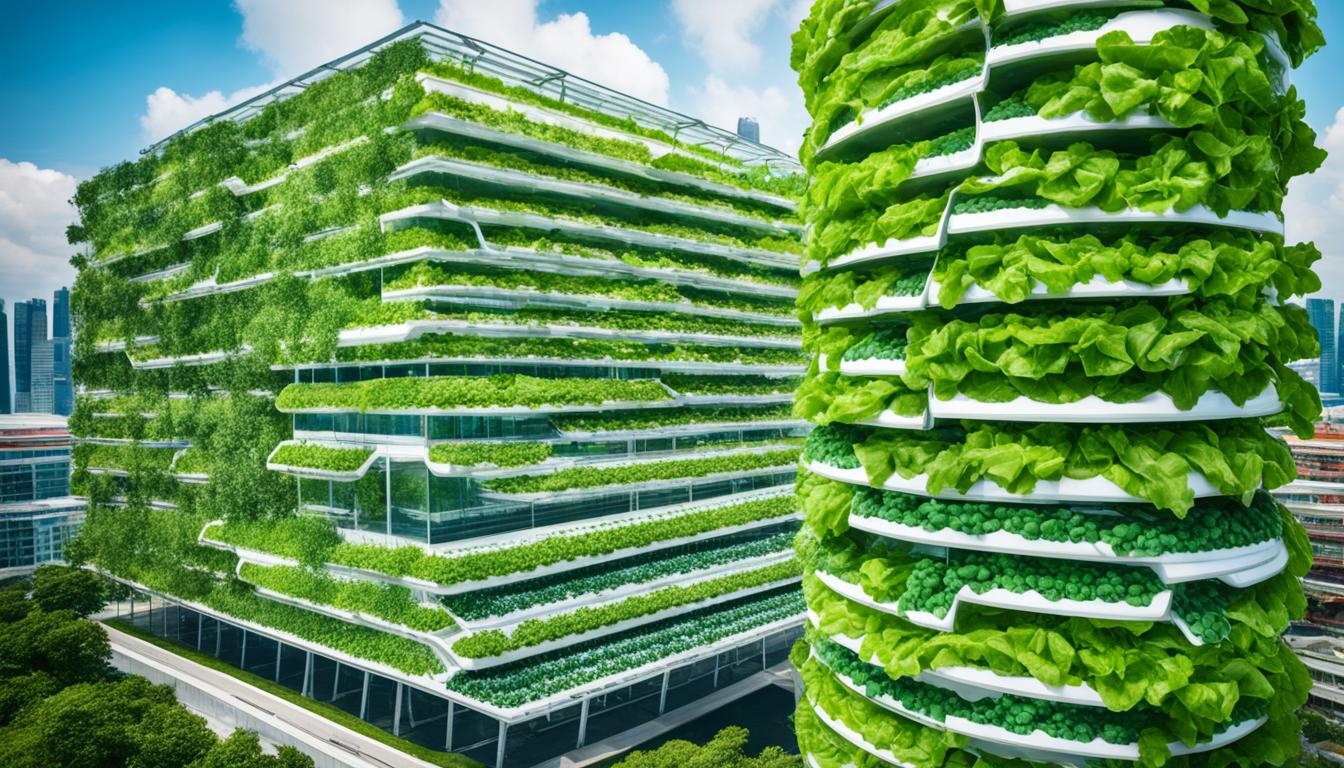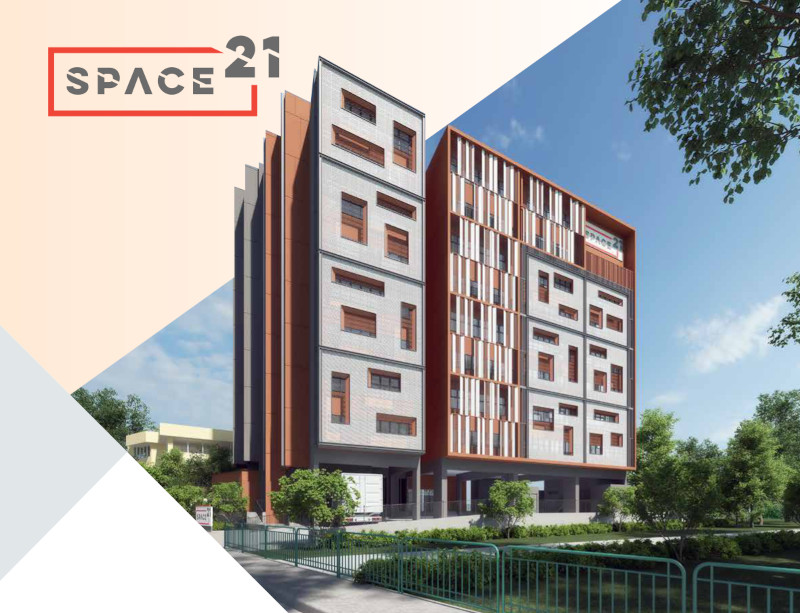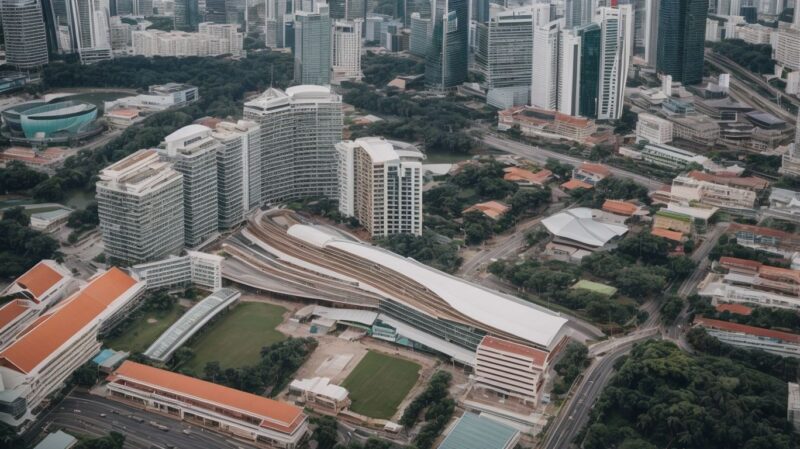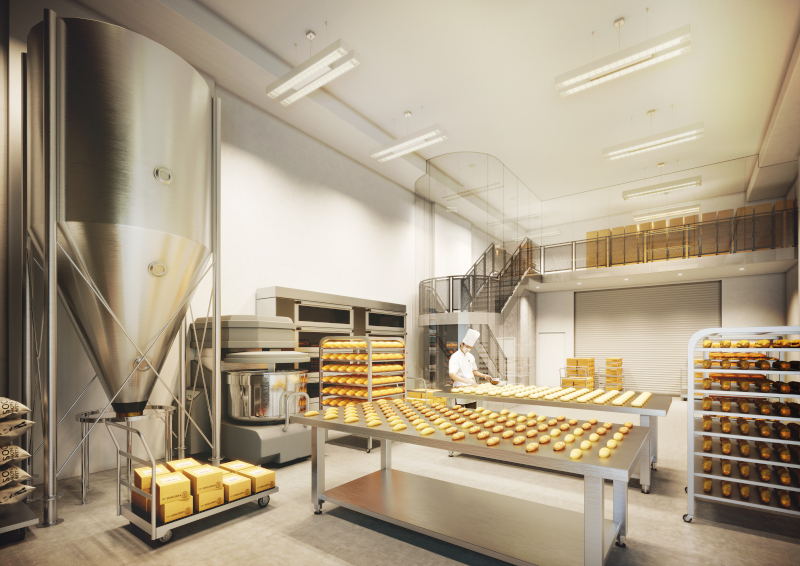Singapore’s “30 by 30” vision aims to produce 30% of its food locally by 2030. Right now, over 90% of its food comes from abroad. So, the country wants to boost its food security.
This effort will make Singapore less at risk from supply problems. As a small island, Singapore faces big challenges in making enough food. It has less than 1% of land fit for farming. So, it needs new methods and tech to produce more food.
Technology and innovation are key in Singapore’s plan for making food sustainably. It is turning to high-tech farming, like growing crops in tall buildings and using water not soil (hydroponics). This way, Singapore can produce more food in less space, while being kind to the environment.
The “30 by 30” goal highlights the need for a food system that can handle climate change. By focusing on sustainable farming and tech, Singapore is leading globally in making food production last into the future.
Singapore’s Vulnerability and the Need for Food Resilience
Singapore is affected by climate change, just like other countries. Dry spells, heatwaves, and heavy rains harm its crops and animals. The country also faces food supply problems due to global issues and shortages. These problems show Singapore needs to work on being more self-sufficient in food.
Climate change brings big risks to getting enough food. Bad weather can destroy crops and lower farm output. Also, pests and diseases might increase. Singapore’s situation is worse because it has little land and needs a lot of imported food. Over 90% of its food comes from other countries. This makes it vulnerable to not having enough food and to prices going up.
Singapore knows it has to focus on making its food supply stronger and more sustainable. The government is doing several things to help. It’s putting money into research and new ways to farm. It’s also encouraging farming in cities and supporting local farmers. Singapore wants to depend less on food imports. This way, it hopes to keep its food supply steady and safe for everyone.
Singapore’s 30 by 30 Goal and the Importance of Technology
Singapore has a big goal called “30 by 30”. They want to make 30% of their own food by 2030. Technology and new farming methods are key to making it happen.
In Singapore, space is limited. So, they use tech to grow more food in less space. Things like vertical farming and hydroponics are becoming popular.
Vertical farming stacks crops up high, making great use of space. It uses special farming methods like controlled environments, LED lights, and smart watering systems. This helps farms grow more food.
The Benefits of Vertical Farming
Vertical farming helps Singapore in many ways. It means they don’t have to rely so much on food from other countries. This makes Singapore’s food supply more secure.
This way of farming is also better for the planet. It uses less water and chemicals. Plus, it cuts down on the chances of plants getting diseases.
Vertical farms can be set up in cities, even in places as packed as Singapore. This means food doesn’t have to travel far to reach people. It’s fresher and better for you.
Tech is what makes vertical farms work so well. Systems control the perfect conditions for plants to grow. This helps Singapore use its resources smartly to grow more food.
To reach its “30 by 30” goal, Singapore is counting on technology and smart farming. By trying new ways and using technology, Singapore is working towards a future where they can grow more of their own food.
Singapore’s Agri-Food Cluster Transformation
Singapore is investing a lot to make the Lim Chu Kang area an agri-food cluster. This big plan wants to make a sustainable and high-tech farming and food production hub.
The Lim Chu Kang agri-food cluster will focus on being green. It plans to use resources wisely and follow a circular economy to reduce its impact on the environment.
Sharing facilities among farms is a big idea in the agri-food cluster. This shared use will help farms produce more, manage water better, and handle logistics. It will cut costs and make farms more productive.
Singapore wants to grow a skilled workforce for this cluster. It will work with top schools to train experts in farming and food production.
Turning Lim Chu Kang into a sustainable agri-food cluster is Singapore’s way of becoming food secure. With tech, green practices, and teamwork, Singapore aims to lead in agri-food cluster development.
The Importance of Sustainability in the Agri-Food Cluster
Using sustainable methods in the agri-food cluster is vital for its future and the planet. By saving water and energy, the cluster will lower its carbon footprint. Adopting a circular economy means less waste and more recycling.
Support for Innovation in the Agri-Food Industry
Singapore values technology and innovation for sustainable growth in the agri-food sector. It aims to produce 30% of its nutritional needs locally by 2030. The government helps farmers and researchers use new methods through funding and projects.
The Agri-food Cluster Transformation (ACT) Fund helps farmers increase their production and become sustainable. It supports adopting new technologies and using resources better. This effort makes the agri-food industry invest in innovations for food resilience.
The Singapore Food Story R&D program focuses on innovation too. It funds research on sustainable food production, future foods, and safety. These efforts aim to solve current problems and lead to better farming methods. This keeps Singapore leading in agri-food innovation, bringing positive industry changes.
Even during the COVID-19 crisis, the government didn’t stop supporting farmers. It introduced the 30X30 Express grant to boost farm output quickly. This ensured a stable food supply during the pandemic. This move showed Singapore’s dedication to the agri-food sector and nationwide food security.
Through these efforts, Singapore helps farmers and researchers innovate in the agri-food field. Investing in technology and research, it aims to be a leader in sustainable food production. This commitment ensures food security for its citizens.

Community Engagement and Urban Farming
Singapore is big on community involvement and urban farming. These methods boost people’s feelings of belonging and connection to their food sources. Residents help grow food on rooftops, in community gardens, and urban farms.
The Foodscape Collective turns unused areas into food-growing spots. It builds ecosystems in neighborhoods for growing fresh, sustainable food. This project also helps the environment and gives people more access to local foods.
The Edible Garden City project focuses on community-run gardens. It uses empty spots to grow gardens, teaching residents about farming. This lets people grow their own food and supports independence.
Singapore has made getting locally grown food easier. They’ve set up ways for people to buy directly from farmers. This helps the local food scene and encourages eating fresh, sustainable food.
Community and urban farming projects increase food security and promote sustainable living. By getting people involved in growing food, Singapore aims for a self-reliant food system. This effort is making cities greener and food systems more sustainable.
The Vision for Lim Chu Kang Agri-Food Hub
The Singapore Food Agency has set up the Singapore Food Story exhibition. This event shows our country’s journey to sustainable food security. It covers milestones, challenges, and goals for the Lim Chu Kang area as our main agri-food hub.
At the exhibition, visitors can see plans for farming innovations and ways to manage resources and waste.
This event is a chance to learn about Singapore’s efforts for sustainable farming. It creates an experience that shows why responsible food production is key. This ensures our food security for the future.
The exhibition’s special part is the master plan for Lim Chu Kang. Visitors will see how sustainable farming and tech can come together in the agri-food hub. The plan looks at our limited land but aims to boost productivity while caring for the environment.
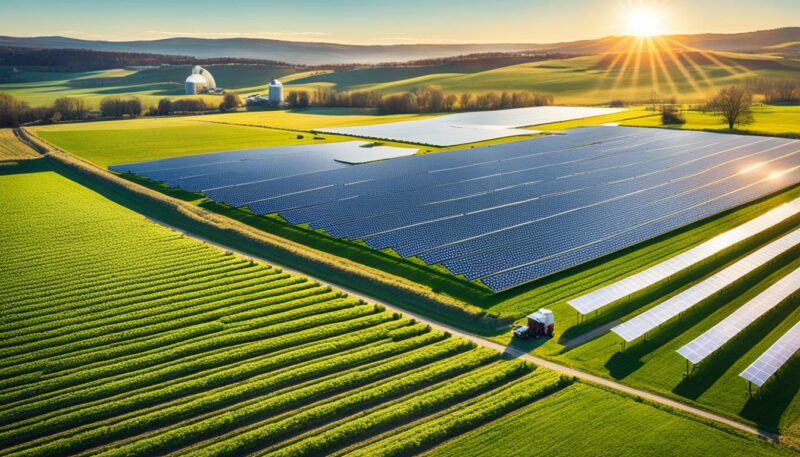
There are hands-on displays about new farming methods like vertical farming and aquaponics. These methods make the most of our land and save water and energy. This leads to sustainable and smart food production.
The event also talks about how to handle waste in the agri-food industry. Visitors will learn about turning food production waste into resources. Methods like composting show Singapore’s focus on a circular economy.
Aside from the master plan and new farming ways, the exhibition shares success stories in sustainable farming. It shows how Singapore works with farmers, researchers, and tech firms to improve the agri-food sector.
In short, the Singapore Food Story exhibition at Lim Chu Kang offers a deep look into sustainable farming’s future here. It’s a chance for people to learn, get involved, and be inspired by Singapore’s drive for food security. The exhibition pushes us all to support our country’s goal for a sustainable agri-food industry.
Trade-offs and Decision-making for Sustainable Food Production
The creation of the agri-food hub in Lim Chu Kang brings both benefits and challenges. Visitors can play “Build Your LCK” at the exhibition. This game helps them see how decisions impact sustainable food production.
Understanding Resource Optimization
In the “Build Your LCK” game, visitors learn about smart use of resources for sustainable farming. They find out how to use water, energy, and fertilizers well. This helps increase food production while caring for the environment.
The game also shows how tech and new farming methods can help a lot. Things like precision irrigation and automated feeding show how to farm better. The goal is to support Singapore’s 30 by 30 vision efficiently.
Evaluating Environmental Impact
The game helps players think about farming’s effects on nature. They see how their choices impact the ecosystem and sustainability. This helps them understand the importance of being kind to the environment when farming.
It makes them think about issues like air pollution from farms and water pollution. Knowing this helps players make better choices. These choices support both farming and the environment.
Navigating Trade-offs
Farming in a sustainable way means making tough choices. The exhibition shows players how to balance different needs. They learn how to support Singapore’s goals for plenty of food and environmental care.
They will decide on how to use land and pick farming methods. These decisions help them understand farming’s complexity. It shows the hard choices that need to be made for sustainable farming.
When visitors play the “Build Your LCK” game, they learn a lot about sustainable farming. This game helps them see the big picture of Singapore’s farming goals. They learn about the hard choices and planning needed to farm in a way that is good for the planet.
Supporting Local Produce and Future Plans
The Singapore Food Story exhibition highlights the path to sustainable food security. It urges us to support local produce. Through engaging games and activities, visitors learn about food security and how they can help.
At the exhibition, there’s a farmers’ market with fresh local goods. This lets visitors support local farmers and helps grow Singapore’s food industry. It’s also a chance to try the great taste of local products.
The Singapore Food Agency calls for public involvement in the future of Lim Chu Kang. It’s about turning it into a top-notch agri-food hub. By backing local produce and staying informed, everyone can aid in food security and industry success.

